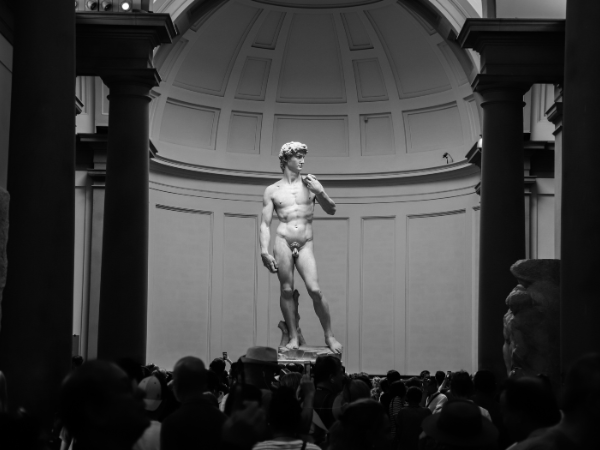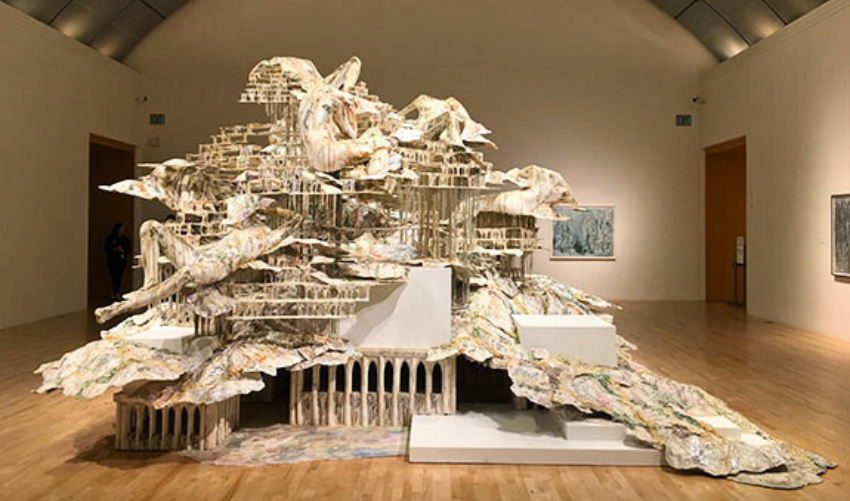Are colored pencils a mixture or a solution? They are a blend of materials that create the colors we see.
Understanding this can enhance your appreciation for art supplies. Colored pencils are common tools for artists and students alike. They come in many colors and are easy to use. But have you ever wondered what makes them work? The science behind colored pencils is fascinating.
They contain pigments, binders, and other materials. These create the smooth application and vibrant colors. Knowing whether they are a mixture or a solution helps you understand their properties. This knowledge can improve your art skills too. Let’s explore the science behind these popular art supplies and discover what makes colored pencils unique.
Colored Pencil Composition
Colored pencils are a popular choice for artists and students alike. They offer vibrant colors and ease of use. But have you ever wondered about their composition? Are colored pencils a mixture or a solution? Understanding their makeup helps you appreciate your art supplies better. This section explores the colored pencil composition and its scientific aspects.
Wax Vs. Oil
Colored pencils generally use two main binders: wax and oil. Each type affects the feel and finish of your artwork.
Wax-based colored pencils are the most common. They contain a high percentage of wax, which helps bind the pigments. Here are some key features:
- Soft and creamy texture
- Blend easily on paper
- More vibrant colors
- Can smudge easily
Oil-based colored pencils use oil as the primary binder. They are firmer and have different characteristics:
- Less vibrant than wax-based pencils
- More durable and less likely to break
- Better for fine details
- Less smudging
The table below compares the two types:
| Feature | Wax-based | Oil-based |
|---|---|---|
| Texture | Soft and creamy | Firm |
| Color Vibrancy | High | Medium |
| Blendability | Excellent | Good |
| Durability | Lower | Higher |
In summary, the choice between wax and oil pencils depends on your artistic needs. Each has its strengths and weaknesses.
Pigment Types
The pigments in colored pencils play a crucial role in their performance. They determine color intensity and opacity. There are two main types of pigments used:
- Dyes: These are soluble in water and produce bright colors. However, they tend to fade over time.
- Inorganic pigments: These are more stable and provide excellent lightfastness. They tend to be less vibrant but last longer.
Here’s a quick look at the differences:
| Type | Color Brightness | Lightfastness |
|---|---|---|
| Dyes | Very bright | Low |
| Inorganic Pigments | Less bright | High |
Artists often choose based on their needs. Some prefer the brightness of dyes, while others value the longevity of inorganic pigments. Understanding these differences can enhance your artistic experience.
What Is A Mixture?
Are colored pencils a mixture or a solution? This question dives into the science behind your art supplies. A mixture is formed when two or more substances combine but keep their own properties. Understanding this helps artists choose the right materials for their work.
Components Of Mixtures
Mixtures consist of two or more components. Each component retains its own characteristics. This is what makes mixtures unique. Here are some key points about mixtures:
- Components can be solids, liquids, or gases.
- They can be separated by physical means.
- The ratio of components can vary.
Mixtures can be classified into two types: homogeneous and heterogeneous. Homogeneous mixtures have a uniform composition. Heterogeneous mixtures do not have a uniform appearance. Here’s a simple table to illustrate the differences:
| Type of Mixture | Definition | Example |
|---|---|---|
| Homogeneous | Uniform composition throughout | Saltwater |
| Heterogeneous | Non-uniform composition | Salad |
In art supplies, understanding mixtures is essential. It helps artists know how different materials work together. For example, colored pencils are made of various substances that blend but keep their own identities.
Examples In Art Supplies
Art supplies often include mixtures. Colored pencils, for instance, contain a core made from pigments and binders. These ingredients combine but do not form a solution. Each part contributes to the pencil’s color and texture.
Here are some common examples of mixtures found in art supplies:
- Colored Pencils: Pigments and wax or oil.
- Watercolor Paints: Pigments mixed with a binder and water.
- Acrylic Paints: Pigments suspended in acrylic polymer emulsion.
Each of these examples shows how mixtures work. They combine to create a product but maintain their individual characteristics. This is what allows artists to use them in various ways. Colored pencils can be blended for different effects. Watercolor paints can be diluted to achieve lighter shades.
Understanding these mixtures helps artists make informed choices. Knowing the components can enhance creative expression.
What Is A Solution?
Are colored pencils a mixture or a solution? This question leads us into the world of science behind art supplies. Understanding what a solution is helps us better grasp how colored pencils work. A solution is a uniform mixture where one substance dissolves in another. This results in a single phase, making it different from mixtures where components remain distinct.
Components Of Solutions
Solutions consist of two main components: the solute and the solvent. The solute is the substance that dissolves, while the solvent is the substance that does the dissolving. Here’s a closer look at these components:
- Solute: This can be a solid, liquid, or gas.
- Solvent: This is usually a liquid, like water, but can be other substances.
In a solution, the solute particles are distributed evenly throughout the solvent. This uniformity creates a clear appearance. Here is a table summarizing the characteristics of solutes and solvents:
| Component | Definition | Example |
|---|---|---|
| Solute | Substance that dissolves | Salt in water |
| Solvent | Substance that does the dissolving | Water |
Understanding these components helps in analyzing colored pencils. When you use them, the color pigments blend with the binder, which acts as the solvent. This blending creates a solution of color that can be applied smoothly to paper. The interaction between solute and solvent is essential for achieving the desired color intensity and texture.
Examples In Art Supplies
Art supplies often include solutions that enhance creativity. Colored pencils are a prime example. Their design incorporates both solutes and solvents, making them effective for various techniques. Here are some common examples:
- Colored Pencils: The pigments dissolve in the binder to create smooth applications.
- Watercolor Paints: Pigments mixed with water form a solution that spreads easily.
- Ink: Ink is a liquid solution where colorants dissolve in a solvent.
Each of these art supplies relies on the properties of solutions. For instance, when using watercolor paints, adding more water changes the solution’s concentration. This affects the color’s transparency and intensity. Similarly, colored pencils can create various effects depending on how they interact with the paper’s surface.
Understanding the science behind these supplies can improve your art skills. Knowing how solutions work allows artists to experiment with colors and textures effectively.
Colored Pencils As A Mixture
Are colored pencils a mixture or a solution? This question dives into the science behind your favorite art supplies. Colored pencils are a fascinating blend of materials. They combine pigments, wax, and binders. This mixture gives colored pencils their unique qualities. Artists often use these pencils for drawing and coloring. Understanding how they work can enhance your art experience.
Layering Techniques
Layering is a popular technique when using colored pencils. It allows artists to create depth and richness in their artwork. By applying different colors in layers, you can achieve beautiful effects. Here are some key points about layering:
- Start Light: Begin with light colors. This helps build a base.
- Gradually Add Darker Colors: Layer darker colors on top. This creates depth.
- Use Pressure Wisely: Change your pressure for different effects.
Consider this simple layering process:
- Choose your base color.
- Apply the base color lightly.
- Add a medium shade on top.
- Finish with a dark shade for shadows.
This technique creates a rich, textured look. Artists can also blend colors within each layer. Experimenting with different combinations leads to stunning results. Remember, layering takes practice. Don’t rush the process. Enjoy each step!
Blending Colors
Blending colors is another essential technique in colored pencil art. It helps create smooth transitions between colors. Artists can achieve various effects by blending. Here are some methods to blend colors effectively:
- Use a Blending Tool: Tools like blending stumps or tortillons work well.
- Try the Burnishing Technique: Apply heavy pressure to create a smooth finish.
- Mix with Colorless Blender: This pencil softens and mixes colors without adding pigment.
Blending can be done in several ways:
| Method | Description |
|---|---|
| Burnishing | Press hard to fill in the paper texture. |
| Layering | Apply multiple layers and blend them together. |
| Colorless Blender | Use a clear pencil to smooth colors without changing hue. |
Experiment with these methods. Each technique offers unique results. Blending adds life to your artwork. It creates smooth transitions and enhances your drawings. Enjoy exploring the world of colors!
Colored Pencils As A Solution
Colored pencils are popular tools for artists and hobbyists. But are they a mixture or a solution? This question leads us to explore the science behind these colorful art supplies. Understanding the nature of colored pencils helps us appreciate their use in art. Today, we’ll focus on colored pencils as a solution. Solutions are mixtures where one substance dissolves in another. Let’s dive into how colored pencils can be seen as a solution.
Dilution Effects
The dilution effect in colored pencils can change how colors appear on paper. Dilution happens when you add more solvent to the color. This process affects the intensity and brightness of the color. Here are some key points about dilution:
- Weaker Color: More solvent creates a lighter shade.
- Layering: Adding layers can intensify the color.
- Blending: Different colors can mix well with dilution.
Artists often use dilution to create various effects. For instance, a light wash of color can provide a soft background. A table below shows common dilution effects:
| Dilution Level | Color Intensity |
|---|---|
| None | Full Intensity |
| Light | Soft Color |
| Medium | Balanced Shade |
| Heavy | Very Light Hue |
Artists use these effects to achieve different artistic styles. Understanding how dilution works helps in creating a vivid masterpiece.
Solvent Use In Art
Solvents are important in art. They help artists manipulate colors in various ways. In the context of colored pencils, solvents can change the texture and appearance of colors. Here are some common solvents used:
- Water: Commonly used for blending and lightening colors.
- Rubbing Alcohol: Provides a smoother blend and vibrant colors.
- Specialty Solvents: Designed for colored pencil work, they enhance effects.
Using solvents can create unique textures and effects in your artwork. For example:
- Apply color directly on paper.
- Use a brush to apply the solvent.
- Blend the colors for a smooth finish.
Solvents also help in achieving gradients and shadows. Experimenting with different solvents can lead to exciting results. Understanding solvent use empowers artists to explore their creativity.
Physical Properties
Are colored pencils a mixture or a solution? This question dives into the science behind your art supplies. Understanding the physical properties of colored pencils helps artists make better choices. Artists use colored pencils in many ways. Their texture, consistency, and solubility play a big role in how they perform on paper. Let’s explore these properties in detail.
Texture And Consistency
The texture and consistency of colored pencils are important for creating different art styles. These pencils have a unique feel. They can be smooth or rough, depending on their composition. The outer casing is usually wood or plastic, while the inner core contains pigments and binders.
Key factors of texture and consistency include:
- Core Material: The core affects how colors blend.
- Hardness: Hard pencils create fine lines. Soft pencils produce rich, bold colors.
- Surface Finish: Some pencils glide easily. Others offer more grip.
Colored pencils can be grouped based on texture:
| Type | Texture | Best Use |
|---|---|---|
| Wax-based | Smooth | Blending and shading |
| Oil-based | Hard | Fine details and layering |
| Water-soluble | Varied | Watercolor effects |
Artists choose colored pencils based on how they want to create. The texture affects the final artwork. A smoother pencil gives softer lines. A rougher pencil can add depth and character.
Solubility Factors
Solubility is another crucial aspect of colored pencils. It refers to how well the materials dissolve in water or other solvents. Most colored pencils are not fully soluble. However, some types offer unique blending options.
Consider these important points about solubility:
- Water-soluble Pencils: These dissolve in water, creating watercolor effects.
- Non-soluble Pencils: They remain intact and do not blend with water.
- Effect of Solvents: Different solvents can alter texture and color.
Artists often mix water-soluble pencils with water. This creates a smooth wash of color. Non-soluble pencils are better for detailed work. They allow for precise control. Solubility impacts how colors interact on paper.
In summary, understanding solubility helps artists choose the right pencil for their projects. Experimenting with different types leads to exciting results.
Conclusion
Colored pencils blend science and art. They mix pigments and binders, creating unique colors. This mixture lets artists express creativity easily. Understanding how they work enhances your drawing skills. Choosing the right colored pencil can change your art experience. Experimenting with different brands may lead to surprising results.
Dive into your art supplies with curiosity. Explore the beauty of color and texture. Your journey with colored pencils can be both fun and educational. Discover the science behind your art and enjoy every stroke.




